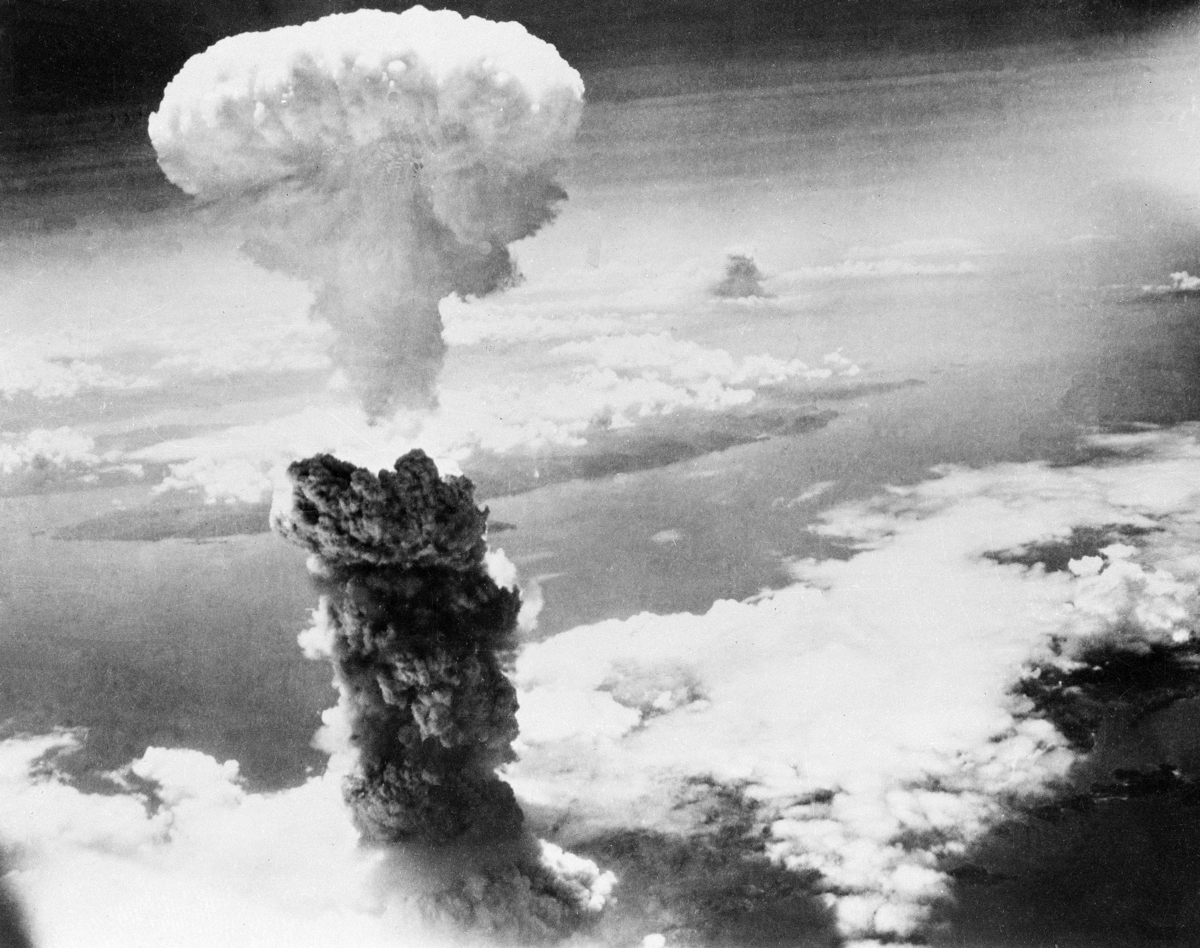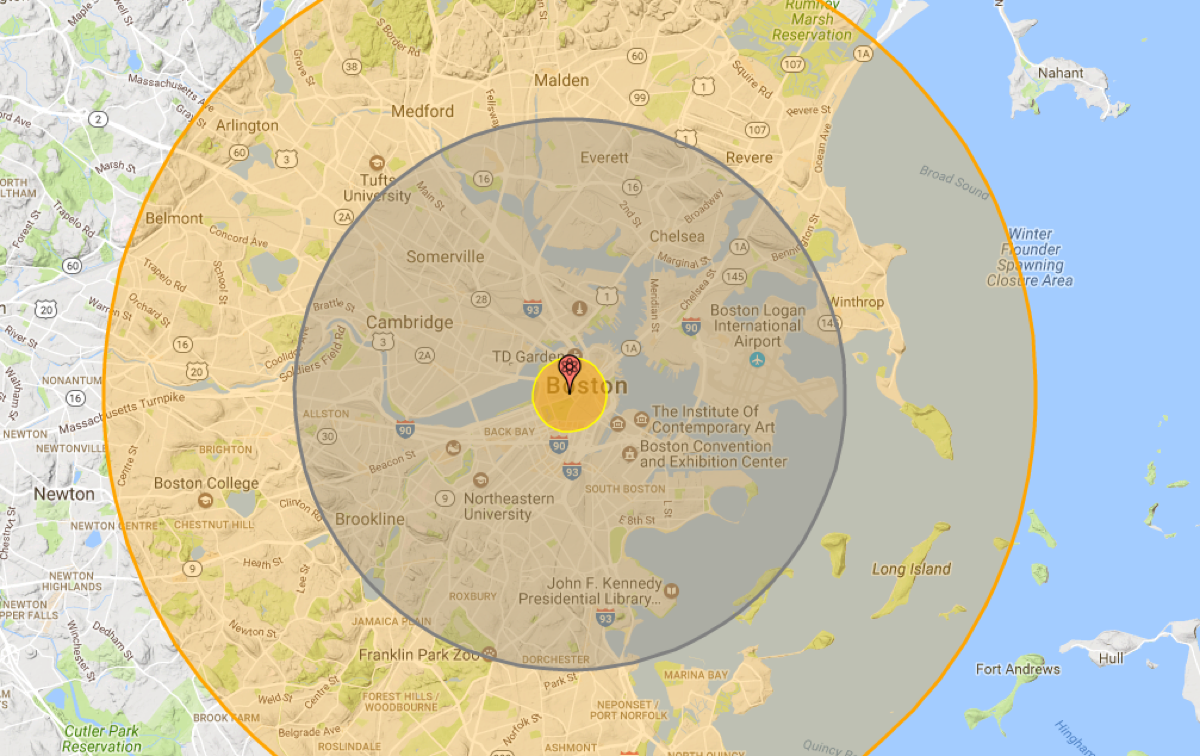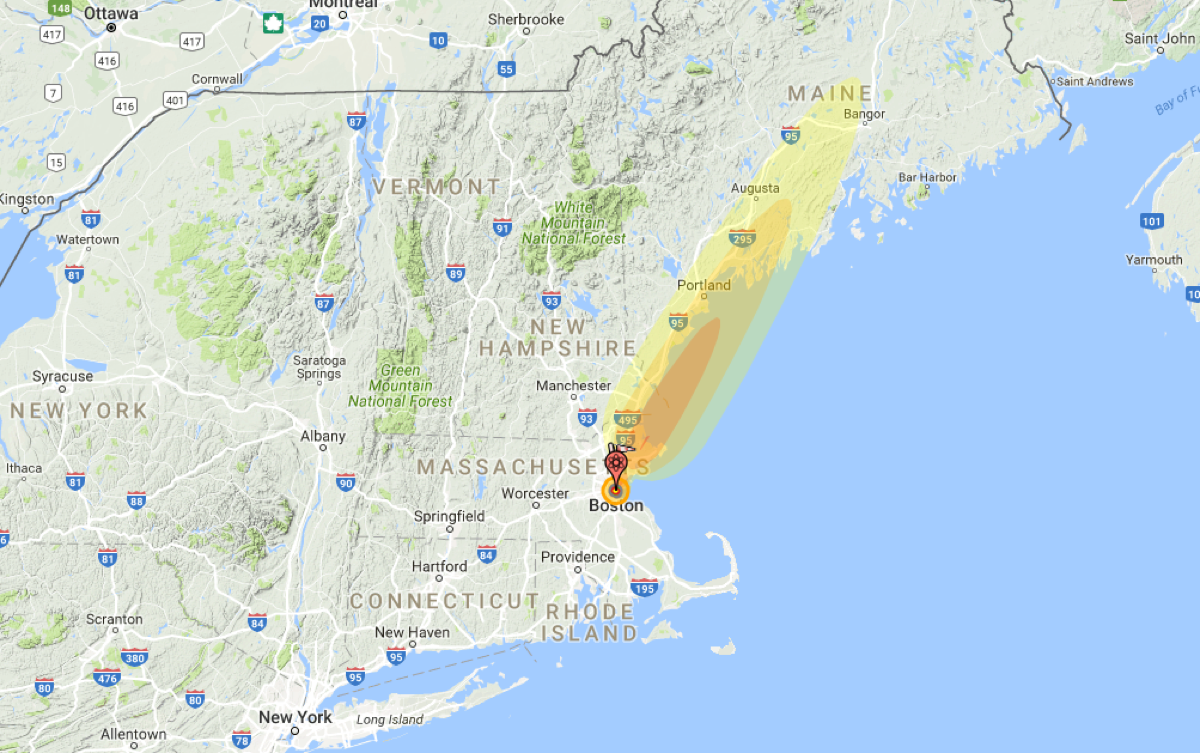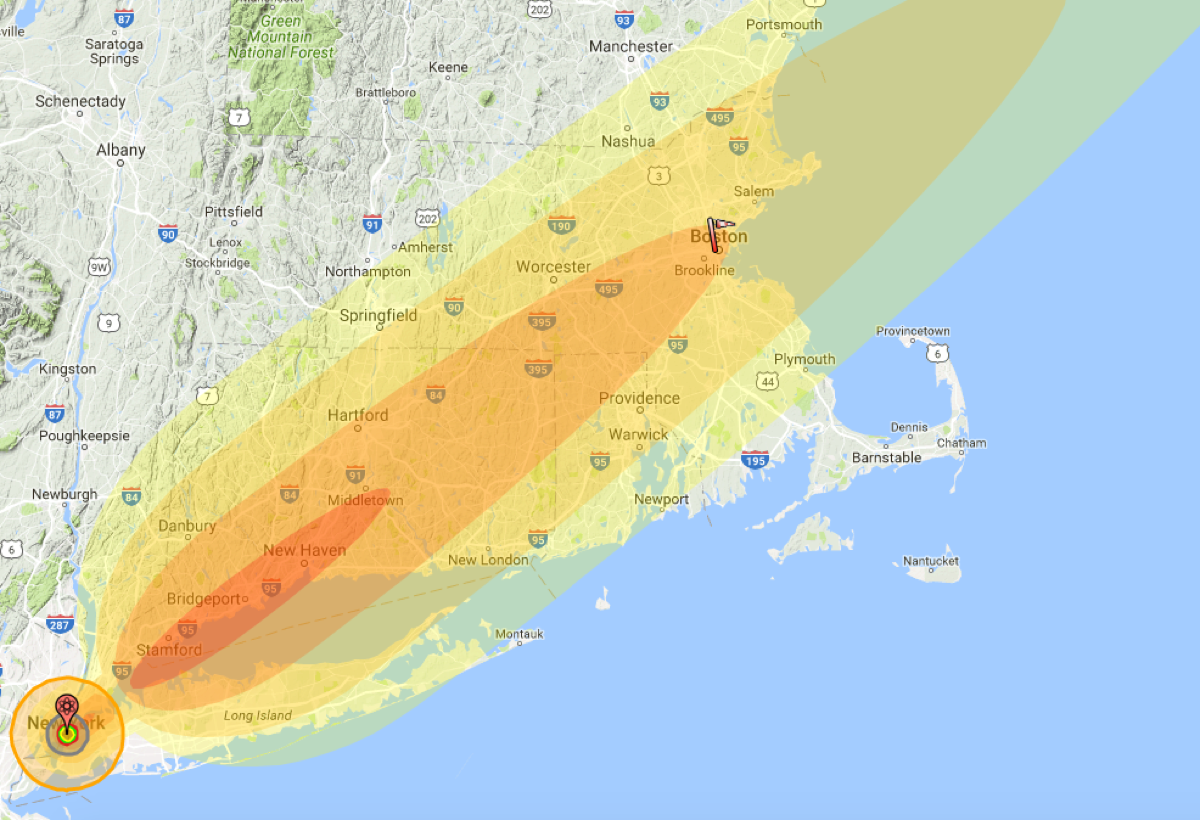How Much of Boston Would Be Destroyed in Nuclear War?

Nagasaki. Photo via AP
The Bulletin of Atomic Scientists moved its famous “Doomsday Clock” to two-and-a-half minutes to midnight this week, marking the closest it’s deemed humanity to self-extinction since the dawn of the Cold War. In Alan Moore’s Watchmen, these scientists set the clock’s hands to five-to-midnight. In other words, we are worse off now than we were in an alternate timeline in which Richard Nixon is still president by 1985.
The scientists made no secret that the mercurial President Donald Trump was a driving factor behind its decision. It’s the same reason Sen. Ed Markey filed a long-shot bill to require Congress to have declared war before the former reality TV star can order a nuclear strike. The United States is fast at work upgrading its nuclear triad, while Russia, China, and Pakistan are following suit.
I know you’ve had plenty on your mind this first week of the Trump administration, what with crowd sizes and rogue National Parks Service tweets. But have you given much thought to how Boston would fare in the increasingly likely event that the United States enters nuclear war with another superpower? I’ll tell you: not well.
The NUKEMAP, an interactive tool designed by Harvard Ph.D and nuclear arms historian Alex Wellerstein, shows in unsettling detail the scope of a nuclear strike on any location of your choosing.
“We live in a world where nuclear weapons issues are on the front pages of our newspapers on a regular basis, yet most people still have a very bad sense of what an exploding nuclear weapon can actually do,” Wellerstein writes. “Some people think they destroy everything in the world all that once, some people think they are not very different from conventional bombs. The reality is somewhere in between: nuclear weapons can cause immense destruction and huge losses of life, but the effects are still comprehendible on a human scale.”

Say one of Russia’s 800-kiloton Topol missiles detonated in the airspace just above Boston. The fireball alone would swallow up the State House, City Hall, and Common. Most residential structures within the air blast radius—stretching nearly 52 square miles—would be destroyed, wiping out nearly all of Somerville, Cambridge, South Boston, Roxbury, and portions of Jamaica Plain, Brookline, and Dorchester. Logan Airport is also located within the air blast radius.
Anyone caught within a 148-square-mile radius of Boston, as far north as Melrose and as far south as Milton, would suffer third-degree burns, if not already vaporized. An estimated 460,120 people would die, and 395,640 would be injured.
But let’s assume this same Topol missile wasn’t detonated in the air, but instead hit the surface. Within a seven-square-mile radius of downtown Boston, mortality rates from radiation poising alone would reach 90 percent. With a 15-mile-per-hour wind, the fallout cloud would carry all the way to Bangor, Maine.

Perhaps a foreign aggressor wouldn’t think Boston, as we do, a world-class city, and instead target New York City. If one of China’s five-megaton Dong Feng-5 missiles hit Manhattan, a 15-mile-per-hour wind would carry a fallout cloud of 100 rads, a unit of absorbed radiation, per hour up to Boston. Between 100 and 200 rads, humans begin to show signs of acute radiation syndrome.

In the early 1960s, President John F. Kennedy planned to build facilities in each state where local governments could continue to operate in the event of nuclear war, and established the first in his home state of Massachusetts. TheMassachusetts Emergency Management Agency (MEMA) bunker in Framingham is currently home to the State Emergency Operations Center. Forty feet below the surface, Gov. Charlie Baker and company would be safely ensconced behind layers of impregnable granite and steel.
The rest of us will be left to scavenge the wasteland in search of a Dunks not smoldering too intensely.


